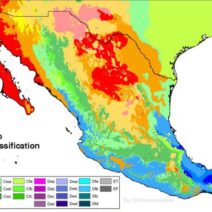Florida, often hailed as the “Sunshine State,” is renowned for its breathtaking landscapes, balmy weather, and vibrant culture. Yet, hidden beneath the surface of this picturesque realm lies a harrowing reality that threatens its very existence: rising tides exacerbated by climate change. The allure of Florida’s coastal beauty cannot overshadow the impending transformations catalyzed by global warming, which poses daunting challenges to its environment, economy, and the lives of its inhabitants.
The phenomenon of rising tides, driven predominantly by the melting of polar ice caps and the thermal expansion of seawater, is a manifestation of a broader climate crisis. Scientific projections indicate that sea levels may rise by as much as six feet by the end of the century if current trends persist. Such projections are not merely academic; they resonate profoundly with Floridians who inhabit low-lying coastal regions. Communities across the state are already experiencing the effects of chronic flooding, with sunny-day flooding becoming increasingly common in locales like Miami Beach, where streets once bustling with tourists have turned into shallow lakes after mere rainfall.
A pivotal factor that fuels the fascination with Florida’s plight is its unique geography. The state’s long, slender peninsula is encircled by ocean, rendering it particularly vulnerable to the advancing tides. As water levels rise, the delicate balance of the ecosystem is disrupted. Mangroves and salt marshes, crucial for biodiversity and coastal protection, face encroachment from saltwater, while freshwater supplies become contaminated, threatening local agriculture and drinking water resources. This intricate interplay of environmental dynamics underscores the urgent need for comprehensive adaptation strategies.
Moreover, the economic implications of rising tides cannot be overstated. Florida’s economy is heavily reliant on tourism, real estate, and agriculture—three sectors that stand to be severely impacted by climate change. Coastal properties are already witnessing a decline in value as homeowners grapple with the reality of increased flooding and hurricane damage. The insurance industry, too, faces existential risks; rising costs and unavailability of coverage in high-risk areas could lead to cascading failures within the real estate market. As such, the socio-economic fabric that has long supported the state’s flourishing communities is increasingly threatened, weaving a narrative of resilience tinged with vulnerability.
In bustling urban centers like Miami, the juxtaposition of opulence and impending disaster is stark. Skyscrapers adorned with glass facades resemble fortresses against the rising tide, while public officials engage in debates over funding for adaptation measures. Investments in innovative solutions such as sea walls, tidal barriers, and elevated infrastructure are being considered, yet the financial burden raises questions about equity and access. Vulnerable populations, including low-income communities and marginalized residents, often lack the resources to adapt, further exacerbating existing disparities. This creates a moral imperative for inclusive planning that ensures that adaptation efforts do not leave anyone behind.
Furthermore, the psychological impact of climate change cannot be overlooked. The residents of Florida, often embedded within their local narratives of sun-soaked leisure, are beginning to confront the dissonance between their love for the land and the existential threat it faces. This cognitive dissonance ignites an imperative for action; individuals and communities are coming together, igniting grassroots movements focused on sustainability and resilience. From beach clean-ups to educational initiatives, a growing awareness around climate action is reshaping the cultural landscape of the state.
Yet, the fight against rising tides extends beyond localized efforts; it implicates broader systemic change. The fossil fuel industry, a significant contributor to greenhouse gas emissions, must be addressed. Florida, heavily reliant on natural gas and oil, faces a dilemma in transitioning to renewable energy sources such as solar and wind. This transition is not merely a question of technology; it’s a matter of political will and public support. As climate-related disasters become more frequent, the urgency for bold policy initiatives intensifies.
The global interconnectedness of climate change further complicates Florida’s situation. The state is not an island; its ecological and economic fates are intertwined with global trends. The increasing prevalence of extreme weather events—hurricanes, heavy rainfall, and droughts—underscores the need for cooperative global action. Florida’s policymakers are called to participate actively in international climate dialogues, acknowledging that local efforts must align with global commitments to reduce emissions and mitigate climate impacts.
In light of these profound challenges, the narrative surrounding Florida’s rising tides is not solely one of despair; it is also one of hope and innovation. The reclamation of coastal zones through sustainable practices exemplifies how Floridians are adapting to their new reality. Universities and research institutions across the state are spearheading projects to develop resilient infrastructure and sustainable urban planning that can withstand the test of time. By fostering collaboration between scientists, policymakers, and community leaders, Florida can emerge as a beacon of resilience in the face of adversity.
Ultimately, the story of Florida’s rising tides serves as a poignant reminder of the intricate relationship between humanity and nature. It beckons a collective reckoning with the choices that have led to this crisis. As the tides rise, so too must the resolve of individuals, communities, and governments to confront climate change head-on. The Sunshine State, with its enduring spirit and unwavering resilience, holds the potential to redefine its future—a future where hope prevails over fear and innovation triumphs over complacency.




